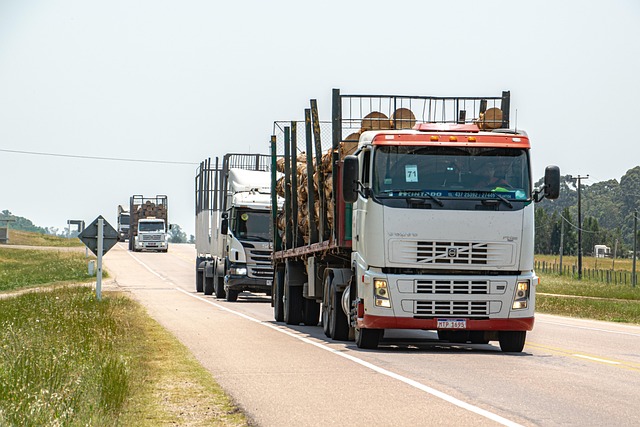Looking to register your car in California? This comprehensive guide walks you through every step. From understanding key requirements for car registration in the Golden State to navigating the VIN (Vehicle Identification Number) verification process, you’ll learn what’s needed to complete the process smoothly. We’ll break down gathering essential documents, performing a VIN check, visiting a DMV office, paying fees, and obtaining your registration certificate. Get ready to hit the road legally!
- Understand the Requirements for Car Registration in California
- Gather Necessary Documents for VIN Verification
- Perform a Vehicle Identification Number (VIN) Check
- Complete the Registration Process at a DMV Office
- Pay the Required Fees and Obtain Your Registration Certificate
Understand the Requirements for Car Registration in California

Before registering your car in California, it’s crucial to understand the requirements and steps involved. In the Golden State, car registration is a legal necessity for all vehicle owners, ensuring road safety and funding vital transportation infrastructure. To kickstart the process, you’ll need several key documents, including proof of insurance, a valid driver’s license, and a completed California Vehicle Registration application. Additionally, your vehicle must pass an emission test and undergo a VIN (Vehicle Identification Number) verification process to ensure its authenticity and history.
A significant aspect of this preparation is the vin inspection or mobile vin verification, which checks for any discrepancies or issues with your car’s unique identifier. This step is critical as it links your vehicle to its historical records, including ownership history, maintenance logs, and recall information. By completing these requirements, you’ll not only facilitate a smooth registration process but also ensure that your California-bound vehicle meets all necessary standards.
Gather Necessary Documents for VIN Verification

Before you can register your car in California, you’ll need to ensure that all necessary documents are in order and that your vehicle passes a crucial step known as VIN verification. This process involves verifying the Vehicle Identification Number (VIN) of your car to confirm its authenticity and ensure it meets safety standards. To facilitate this, gather essential documents such as the title or registration certificate from the previous owner, proof of insurance, and your valid driver’s license.
Additionally, consider arranging for a mobile VIN inspection or verification service. These services send a trained professional to your location to complete the VIN check, making it more convenient, especially if you’re busy with other commitments. Having these documents prepared will streamline the registration process, ensuring a smoother experience when you visit the California Department of Motor Vehicles (DMV) office.
Perform a Vehicle Identification Number (VIN) Check

Before registering your car in California, it’s crucial to perform a Vehicle Identification Number (VIN) check. This step is essential for verifying that the vehicle’s information matches what’s on record and ensuring there are no outstanding issues or liens associated with it. A mobile VIN verification service can make this process convenient by allowing you to conduct an inspection from the comfort of your location.
By using a mobile vin verifier, you can easily access detailed information about the car’s history. This includes past ownership records, accident reports, and maintenance logs. Moreover, a VIN inspection helps ensure that the vehicle meets all safety standards and emissions regulations set by California, making it a game-changer in ensuring a smooth registration process.
Complete the Registration Process at a DMV Office

To complete the registration process for your car in California, you’ll need to visit a DMV office. This is where you’ll conduct essential steps like providing necessary documents and undergoing a Vehicle Identification Number (VIN) verification. During this process, a DMV examiner will check that all details on your car’s title, registration, and VIN match exactly.
A crucial part of the inspection involves a mobile VIN verifier or inspection tool used to cross-reference the VIN with state records. This ensures the vehicle isn’t stolen, has no outstanding issues, and meets safety standards. Once verified, you’ll be issued a California registration certificate and license plate, finalizing your car’s registration within the state.
Pay the Required Fees and Obtain Your Registration Certificate

After completing your vehicle’s registration application, it’s time to settle the fees required for the process. In California, these typically include a registration fee and a vehicle identification number (VIN) verification charge. The VIN is a unique code that identifies your car, and its verification ensures the accuracy of the information provided during registration. You can opt for a traditional VIN inspection at a designated center or choose a more convenient option with a mobile vin verifier.
The registration certificate will be issued once the fees are paid and the VIN verification process is complete. This document is essential as it confirms your vehicle’s legal status and is required for annual renewals. Ensure you keep this certificate in a safe place, as you’ll need it for future references and transactions related to your car.
Registering a car in California involves understanding key requirements, gathering essential documents for VIN verification, performing a Vehicle Identification Number check, completing the process at a DMV office, and paying necessary fees. By adhering to these steps, you’ll ensure a smooth and legal registration for your vehicle in the Golden State. Don’t forget the importance of accurate VIN verification for a successful car registration outcome.
